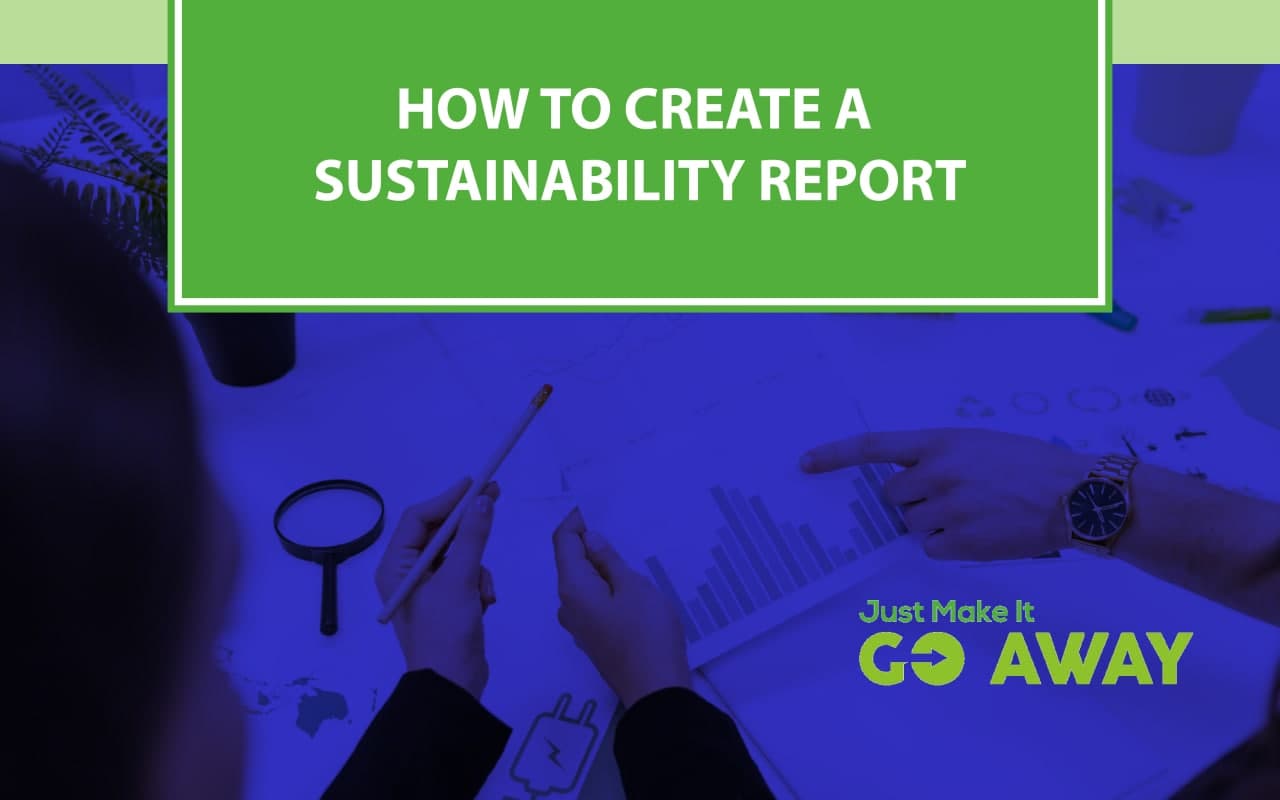Many companies release annual sustainability reports or ESG reports. But if you’ve never read through one, you may be wondering what a sustainability report is and how to create a sustainability report. A sustainability report is annual company documentation of all their sustainability initiatives for the year. It’s important to understand that sustainability encompasses much more than just measures taken for the good of the environment. Sustainability has three main pillars: environmental sustainability, economic sustainability, and social sustainability. When releasing a sustainability report, aspects from all three of these pillars are almost always covered.
What Is the Difference Between Sustainability, Environmental, ESG, and CSR Reports?
Sustainability and ESG reports often have a reputation of being “environmental” reports, but actually environmental reports are significantly different from sustainability reports.
Environmental reports are often audits done to assess the environmental impact of a particular project (usually a construction or building project). They are often done per the requirement of a governing body. Life cycle assessments fall under the realm of environmental reports, too. These are appraisals done to determine the impact a single product has throughout its lifetime, from raw material extraction to end of life.
Sustainability reports and ESG reports are two terms that are often used interchangeably. These are reports released by an organization usually once a year summarizing sustainability initiatives. Although the definition above defines sustainability through its three pillars, it is not always defined as such, and the term is rather vague. ESG stands for environmental, social, and governance and ESG is a corporate sustainability term that sets out to define environmental, social, and governing sustainability with specific criteria. It has also become the more popular term for investors, and because of this, many public companies title their sustainability reports as ESG reports.
Corporate social responsibility (CSR) is another business strategy term frequently used when talking about business sustainability and ESG. CSR is a business model that takes into account a company’s impact on the environment and society. Although environmental, social, and economic sustainability is intrinsically linked, CSR focuses more on the social side such as the community, society, and employees that a company influences.
Why Release a Sustainability Report?
On the roadmap towards sustainable practices, many companies first start by adopting an ESG policy. This shapes their initiatives and goals for the future, which may include being carbon neutral by 2050 or reevaluating their supply chain practices to be more ethical and sustainable. Larger companies might hire a Sustainability Manager or assign a team to accomplish these tasks. This individual or team can then find ways to make these goals a reality. It usually starts with an overall audit or tracking to see where the company currently sits. For example, in order to accomplish carbon neutrality, a company needs to calculate its Scope 1 and Scope 2 emissions. In order to improve their supply chain, companies may consider doing a factory audit or SMETA Audit, which can include labor standards, health and safety, business ethics, and an environmental assessment.
Initiatives range from energy, water, emissions, waste, employee benefits, non-profit involvement, etc. involving many different departments and people. It ends up being a lot of information, and compiling it all makes sense. The social sustainability pillar and the governance ESG are both tenets that champion transparency, and publishing this report publically helps market a company and urges others in the industry to follow suit.
Companies are now facing investor pressure to publish ESG reports, and it’s for more than just transparency. Younger investors want to take into account sustainability when putting their money into funds, and full ESG criteria can only be provided by the company directly. Pushing for ESG policies can lead to cost savings and adds value and resiliency to a company in light of climate change. Investing in sustainability reports can better your company, better your marketing, win you more clients and a stronger investor and customer base, and overall help your company thrives.
Sustainability Report Layout
Sustainability reports can vary widely. They can be 5 pages long or 200 pages long, and be focused on just environmental sustainability or encompass all pillars of sustainability and then some, even including company finances.
When a company wants to write a sustainability report, a typical format to follow starts with an introduction to the company, a message from the CEO or founder, and outlines which sustainability framework the company adheres to, such as the United Nations Sustainable Development Goals (UNSDGs). A business overview and introduction to the industry as a whole can then follow.
The rest of the report outlines organizational sustainability efforts and is often best organized in terms of either the three pillars of sustainability or the three tenets of ESG. There is a lot of information that can be incorporated, including:
Environmental
- Environmental Management
- Product Efficiency and Innovation
- Product Lifecycle Management
- Pollutant Management
- Greenhouse Gas Emissions
- Energy
- Water
- Waste
Social
- Culture and Values
- Diversity and Inclusion
- Employee Engagement and Development
- Employee Health and Safety
- COVID-19 Impact and Response
- Product Safety and Quality
- Supply Chain
- Stakeholder Engagement
- Community Involvement
- Charitable Giving
Governance
- Board Composition and Diversity
- Board Oversight of ESG
- Risk Management
- Business Ethics and Compliance
- Cybersecurity, Data Privacy, and Human Rights
- Public Policy
- Advocacy
Additional Tips on Creating a Sustainability Report
If this is your first venture into reporting, it can be a bit overwhelming. From someone who has helped several companies write their first sustainability reports, here are a few tips to keep in mind:
- Look at other Sustainability Reports in your same industry. By looking at what other companies are reporting, how they’re reporting, and how they’re organizing their reports, you can decide how you want your report to look, how much copy versus visuals you want, and what you want to include or leave out. Looking within your industry is important, too. What a bank includes in its sustainability report will be very different from what a manufacturing company includes. You can also use these reports to benchmark your company against, and maybe even glean ideas for future sustainability initiatives!
- A sustainability report is a marketing tool. It’s important not to forget this one. A sustainability report is where companies can show off their sustainability initiatives, their care for the planet and employees, and their sustainable business models. ESG reports for public companies especially are geared towards investors, so it’s important to keep this in mind when both reading them and writing them.
- Don’t greenwash! A sustainability report is a great place to show off what your company is doing for the world and highlight your green initiatives. But sustainability information, especially metrics, should always be honest and forthcoming. No company is perfect, and every organization can always improve. Admit your shortcomings and use them to make more goals.
- Ask for help when you need it. When a company doesn’t have a designated sustainability staff member or team, the responsibility for writing such an important report should go to someone who knows the field. Hiring a freelance sustainability writer, editor, or consultant can help make the process much easier and help you make sure you’re meeting all the right criteria. Just make sure you have readily available information (especially metrics) to support your freelancer in their efforts! Use this guide on how to create a sustainability report to help your business get on track. Are you ready to start a new chapter in your business with this sustainability report?


